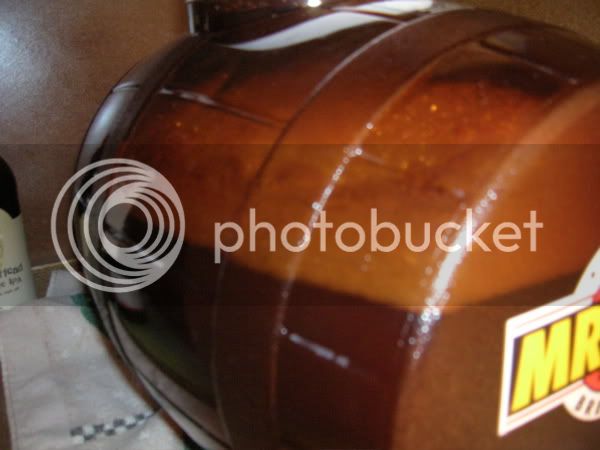Well, Debi @ MrBeer.com said that yes, two of the "softpacks" of the LME will make up one of the discontinued cans.
So, I am inferring from this that adding 1# of DME gives approximately a 2% boost in ABV, since the 8.8 oz. "softpacks" claim to boost the ABV by 1%. That's really what I was trying to get at, I just didn't want to tell the Mr. beer people that I plan on not using their overly-expensive ingredients. I can get a 1# bag of DME for the same price as an 8.8 oz packet of their stuff.
I am doing some recipe conversions and this will help me greatly - I hope it does for others, as well.

nestar:

nestar:

nestar:

nestar:

nestar:
As it is, I am really wondering how my "Klondike Gold Cascade" is going to turn out. Their recipe/kit that I got had one can of the NorthWest Pale Ale (craft series) HME, a packet of "Smooth" (amber) LME, and a pouch of the "Booster." The LME should help give it more body overall, but that dang corny Booster is still in play. Of course, as the name implies, I added Cascade hops to the wort right before pitching the yeast. Not exactly dry-hopping, as I have learned, but closer to that than anything else, as I definitely didn't throw it in the boil, or even at flameout.
My plan is 3-3-2 for a minimum before I even put one on the fridge for week, THEN finally cracking one open. I can't believe today has only been a week, still two more to go in the LBK.
Here's a question I can probably find the answer to, but I am too busy trying to get to the end of this thread (although I am now wondering how much more there is to learn in it, as most of the stuff said is repeated info) : My next Mr. Beer attempt will be a recreation of their Novacaine Barleywine, and since I have an extra LBK, I plan on racking this beer into it as I have heard that "bulk" conditioning is better than bottle conditioning. My question here is, can I put the secondary in the refrigerator & get the same results, or does the bulk-conditioning need to be at the same temp as the fermentation? IOW, do I need to keep the secondary at 62-64 degrees F ambient air temperature, or will the colder temps of the fridge not affect it? I plan on letting it go in the secondary for 4-5 weeks before bottling, carbonation, then a LONG time for bottle conditioning. It will probably be Christmas or NYE before I ever crack one of these open to test, and I am thinking Easter of 2016 when it will be at its best. The goal will be to open the last bottle on my birthday in 2016 - which is in August. End of June/2016 will be a year of bottle-conditioning, then put it in the fridge for the next 6 weeks before my birthday happens.
I kind of can't believe I am planning on waiting a year + for my second batch of beer I've brewed, ever.







